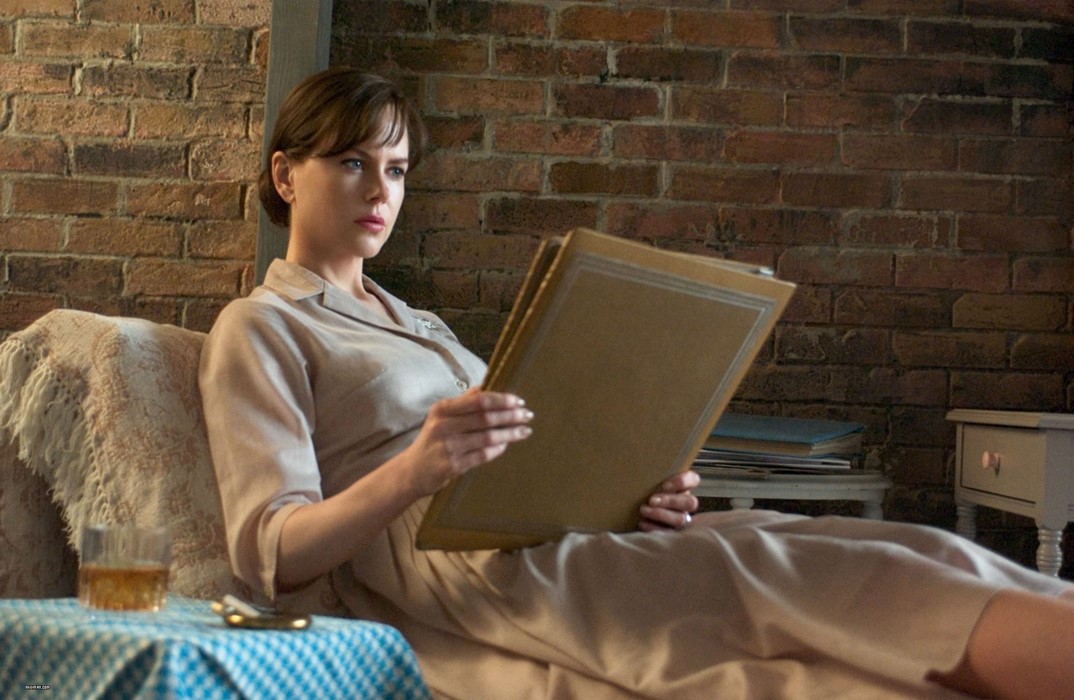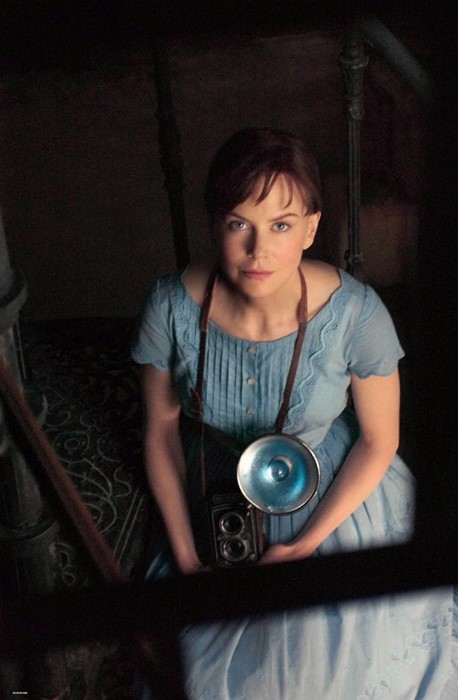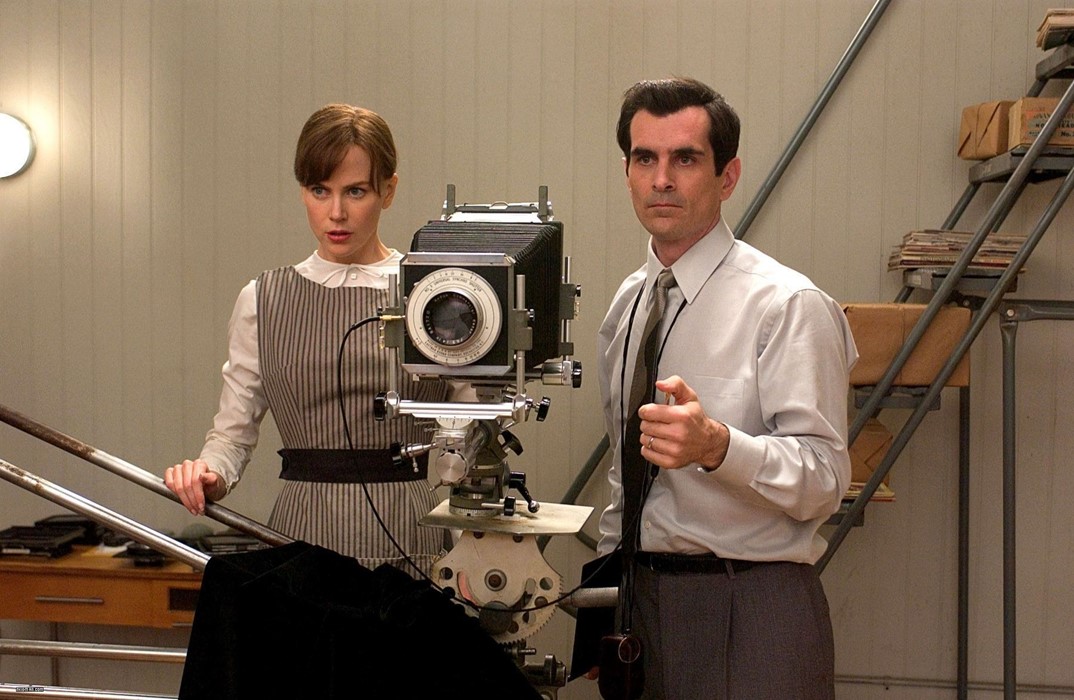Fêted for her empathetic portraits of outcasts, Diane Arbus received the Hollywood treatment in this fittingly unconventional biopic
Diane Arbus, America’s great 20th century chronicler of outcasts, wielded her 35mm camera towards the likes of fire eaters, sex workers, and tattooed men. Swapping the sheen of Vogue and Harper’s Bazaar for the grime of her street portraiture, Arbus’ quest for a life on the fringe was authentic; to nudist colonies, she went unclothed, at swingers’ parties, she would partake. Fur: An Imaginary Portrait of Diane Arbus, the 2006 film starring Nicole Kidman and Robert Downey Jr., was not as authentic – using Patricia Bosworth’s acclaimed Arbus biography as a leaping point, it’s a fantastical film about a controversial artist. To celebrate the Barbican’s exhibition Another Kind of Life: Photography on the Margins, featuring work from Arbus, AnOther revisits this unconventional portrait piece.
Set in 1958, 13 years before the Venice Biennale show that would make Arbus’ name, Fur depicts her artistic awakening. A budding relationship with her neighbour, Lionel (Downey Jr.), suffering from hypertrichosis, ushers Arbus into the world of ‘freaks’ whose portraits would become her trademark. Carrying her camera through suburbia like a lone paparazzo (it was a honeymoon gift from her husband, Allan), Kidman plays Arbus like a woman apart. This rupture between her commercial shoots and her intimate portraits from the fringes of 50s America was crucial; famously, Arbus had walked off a Vogue spring shoot for the final time one day, uttering, “I can’t do it anymore. I’m not going to do it anymore.”

Studying under renowned photographer Lisette Model, a contemporary of Cartier-Bresson, Arbus instead adopted a unique training method: to walk around without film in her camera, so as to ‘practice seeing’. Striking up a rapport with the LGBTQ community, with circus performers, and with eccentric figures around her neighbourhood, Arbus roamed far from her family’s department store on 5th Avenue, saying: “My favourite thing is to go where I’ve never been.”
Fur conjures a fantastical vision of Arbus; it shuns the rigour of conventional biopics for its self-proclaimed “imaginary” portrait. This is a tricky tactic; where biopics traditionally hold a mirror up to the lives of their subjects, Fur offers a kaleidoscope in which competing visions of Arbus’ identity blur and refract. It can jar – this image of a society woman wading into the squalor of “deviants” or “freaks” reeks of exploitation. A tension invades all of Arbus’ work, not only due to the tragedy of her early demise (she swallowed barbituates, then slit her wrists deeply enough to wound the tendons), but also this uneasy ambiguity between exploitation and representation.

Indeed, Arbus’ work is more commonly reopened for critique than many of her contemporaries. Susan Sontag is among her chief detractors, dismissing Arbus’ oeuvre in the most reductive terms – “In photographing dwarves, you don’t get majesty and beauty, you get dwarves,” Sontag once wrote. But Fur offers a somewhat sanitised vision of Arbus, when compared with how the artist would truly end up – sleeping on a mattress alone in her studio apartment, head shaved, work pinned around her bed. The autonomy many artists crave can so easily elide into a biting loneliness; Arbus’ jagged nocturnal rhythms and ceaseless chase for life on the margins eventually caught up with her, but Fur shies away from this.
For an artist who tilted the world on its axis, shooting what she found underneath, Arbus herself remains difficult to pinpoint. Fur, though ‘an imaginary portrait’, does its best. Arbus’ own words are revealing: “A photograph is a secret about a secret. The more it tells you the less you know.” Fur seems to have adopted this maxim – it’s a smudged portrait of a portrait artist. The more we see of Arbus, the less we understand.
Another Kind of Life: Photography on the Margins is on at the Barbican Art Gallery until May 27, 2018.
